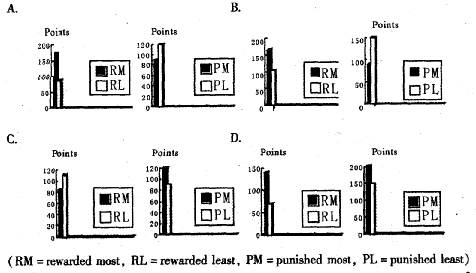题目内容
第二节:完形填空(共20小题;每小题1.5分,满分30分)
阅读下面短文,掌握其大意,然后从36—55各题所给的四个选项(A、B、C和D)中,选出最佳选项。
This is a true story. Rex White lived in a 36 some distance from the coast, so he 37 to drive to Lytham and leave his car in a car park beside the river. Then he 38 row out to the pilot boat, and wait for the 39 ship that it was his duty to guide.
Early one morning, Mr. White 40 to Lytham from a night on duty, only to 41 he couldn't start his car. He had driven from his village the evening before and left his car in the car park 42 . Now with his work finished; how he 43 to drive home to enjoy a cup of hot chocolate and a warm bed! 44 , no matter what he did, he could not get the engine to start.
It was a cold and windy night; there was no garage 45 to which he could turn for help. He was just about to 46 , and spend the rest of the night in his car, when a bright idea 47 him. He pushed his car round so that it was facing in the 48 of the wind, opened ail four doors, 49 it along a short way, and then jumped in. The doors acted like 50, and in no time the wind had taken him 51 out of the car park and away down the beach road. When he 52 the starter-switch once more, the engine roared to 53 immediately. All he had to do then was to stop the car and shut the 54 .
He went to bed later than usual, 55 he did not go without his cup of hot chocolate. Mr. White was not a seaman for nothing.
36. A. city B. town C. village D. family

37. A. decided B. had C. managed D. asked
38. A. could B. should C. would D. might
39. A. old B. foreign C. big D. particular
40. A. returned B. got C. went D. walked
41. A. accept B. tell C. find D. remember
42. A. once more B. as usual C. at last D. as well
43. A. prepared B. supposed C. hurried D. desired
44. A. Sadly B. Surprisingly C. Naturally D. Finally
45. A. inside B. around C. away D. ahead
46. A. shout at B. break down C. give out D. give up
47. A. knocked B. beat C. kicked D. struck
48. A. position B. direction C. speed D. strength
49. A. pulled B. rode C. pushed D. followed

50. A. brakes B. engines C. energies D. batteries
51. A. nearly B. right C. almost D. hardly
52. A. opened B. checked C. tried D. provided
53. A. effect B. way C. use D. life
54. A. windows B. doors C. lights D. systems
55. A. but B. or C. and D. so
36---40 CBCDA 41---45 CBDAB 46---50 DDBCB 51—55 BCDBA
略

练习册系列答案
 阅读快车系列答案
阅读快车系列答案
相关题目
 If, however, you move the whole body to a time zone which is four hours different, the two clocks will be out of step, like two alarm clocks which are normally set together, but which have been reset a few hours apart. Whereas the two clocks would normally sound their alarms together, now they ring at different times. Similarly, the body can be set for evening while the sun is rising.
If, however, you move the whole body to a time zone which is four hours different, the two clocks will be out of step, like two alarm clocks which are normally set together, but which have been reset a few hours apart. Whereas the two clocks would normally sound their alarms together, now they ring at different times. Similarly, the body can be set for evening while the sun is rising. delays the body clock in the morning, and advances it at night. Coffee at mid-afternoon is neutral. Protein in meals stimulates wakefulness, while carbohydrates promote sleep. Putting food into an empty stomach helps synchronize the body clock.
delays the body clock in the morning, and advances it at night. Coffee at mid-afternoon is neutral. Protein in meals stimulates wakefulness, while carbohydrates promote sleep. Putting food into an empty stomach helps synchronize the body clock.
 .
. adults than children ,McDaniel noted.
adults than children ,McDaniel noted. e studies are not true for everyone
e studies are not true for everyone